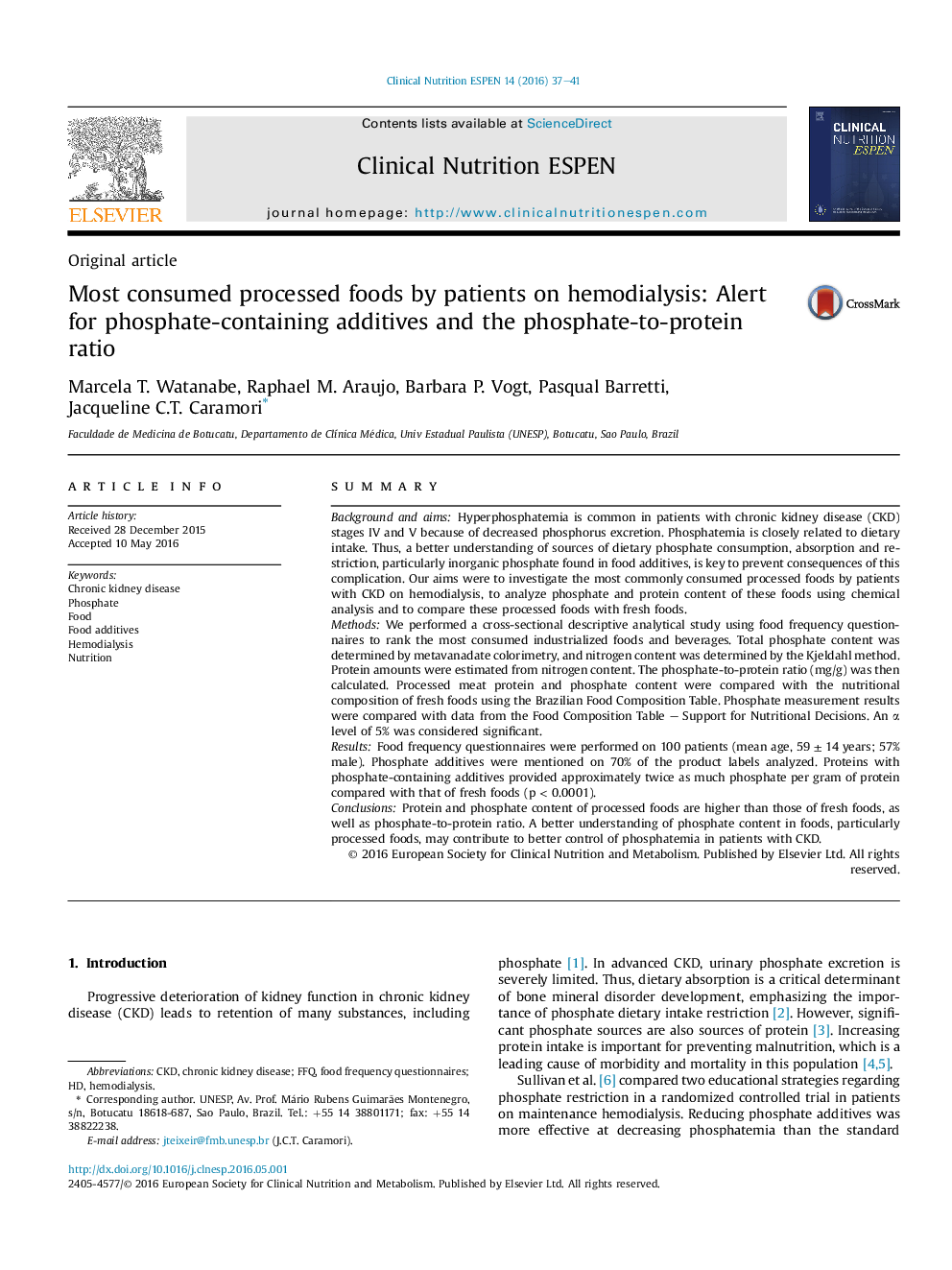| Article ID | Journal | Published Year | Pages | File Type |
|---|---|---|---|---|
| 2685860 | Clinical Nutrition ESPEN | 2016 | 5 Pages |
•Food frequency questionnaires from patients with hemodialysis were analyzed.•Excess consumption of phosphate from processed foods was observed.•Educational strategies focused on food additives may help to control phosphatemia.
SummaryBackground and aimsHyperphosphatemia is common in patients with chronic kidney disease (CKD) stages IV and V because of decreased phosphorus excretion. Phosphatemia is closely related to dietary intake. Thus, a better understanding of sources of dietary phosphate consumption, absorption and restriction, particularly inorganic phosphate found in food additives, is key to prevent consequences of this complication. Our aims were to investigate the most commonly consumed processed foods by patients with CKD on hemodialysis, to analyze phosphate and protein content of these foods using chemical analysis and to compare these processed foods with fresh foods.MethodsWe performed a cross-sectional descriptive analytical study using food frequency questionnaires to rank the most consumed industrialized foods and beverages. Total phosphate content was determined by metavanadate colorimetry, and nitrogen content was determined by the Kjeldahl method. Protein amounts were estimated from nitrogen content. The phosphate-to-protein ratio (mg/g) was then calculated. Processed meat protein and phosphate content were compared with the nutritional composition of fresh foods using the Brazilian Food Composition Table. Phosphate measurement results were compared with data from the Food Composition Table – Support for Nutritional Decisions. An α level of 5% was considered significant.ResultsFood frequency questionnaires were performed on 100 patients (mean age, 59 ± 14 years; 57% male). Phosphate additives were mentioned on 70% of the product labels analyzed. Proteins with phosphate-containing additives provided approximately twice as much phosphate per gram of protein compared with that of fresh foods (p < 0.0001).ConclusionsProtein and phosphate content of processed foods are higher than those of fresh foods, as well as phosphate-to-protein ratio. A better understanding of phosphate content in foods, particularly processed foods, may contribute to better control of phosphatemia in patients with CKD.
